Lumped and distributed modelling of suspended solids in a
advertisement
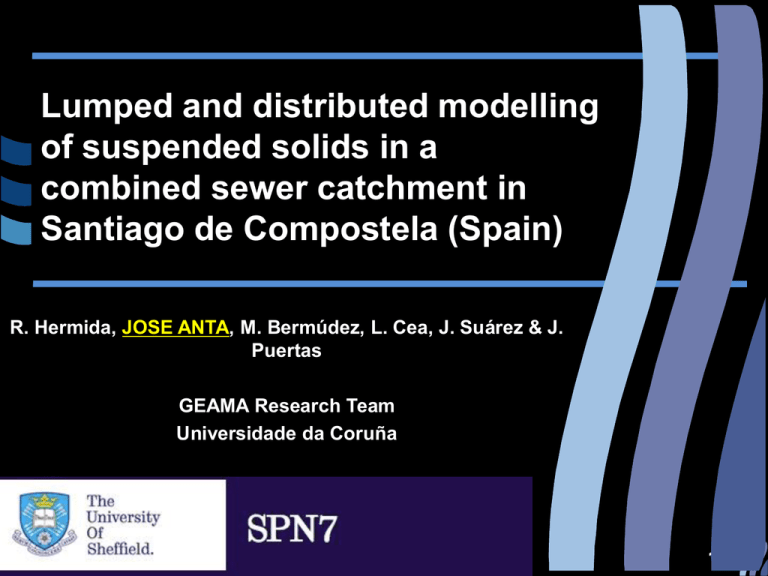
Lumped and distributed modelling of suspended solids in a combined sewer catchment in Santiago de Compostela (Spain) R. Hermida, JOSE ANTA, M. Bermúdez, L. Cea, J. Suárez & J. Puertas GEAMA Research Team Universidade da Coruña 1 INTRODUCTION • Flow and Pollution Modelling in Urban Systems dust and dirt buildup washoff gully-pot processes sewer erosion - transport 2 OBJETIVES • Comparison of a lumped and distributed model for TSS in “El Ensanche” combined sewer catchment • Model developed with Infoworks CS 9.x – Ackers-White equation – KUL model • 10 rain event were used for model calibration. More details presented yesterday: “Mobilized pollution indicators in a combined sewer system during rain events” del Río et al. 3 DESCRIPTION OF THE URBAN CATCHMENT 4 MODEL DEVELOPMENT • Distributed model (del Río, 2011) – 316 subcathments: 183 streets, 128 roofs, 5 pervious areas – 7 km of pipes (150 – 1200 mm) • Lumped model (Hermida, 2012) 5 BUILDUP M0 Ps K1 1 e N J K1 Model parameters : Ps, K1 WHASOFF () () K a t = C1 × i t C2 () - C3 × i t Model parameters : C1, C2, C3 6 SEWER TRANSPORT MODELS Ackers & White (1996) ì u æ d50 ö ï ×í - K × lc × g × ç ÷ø R è ïî g × s - 1 × R Model parameter are fixed. Model variables: s, d50 a b æ R ö æ d50 ö g Cv = J × ç We × ÷ × ç × l c A ø è R ÷ø è ( ) e ü ï ý ïþ m KUL (Boutelegier and Berlamont, 2002) æ t - t cr ,erosion ö qs = a erosion × ç ÷ t è cr ,erosion ø berosion d50 t cr ,erosion = g erosion × g × s -1 × r × 1000 ( ) Too many model parameters (6 parameters). Model variables: s, d50 7 SEWER TRANSPORT MODELS KUL : Shields approach (Shizari and Berlamont, 2010) g erosion = Shields Number = f (Re*) Shields number has to be re-evaluated in each time – step (not allowed in IF) Ota and Nalluri equation (2003) e 0.036 e 1.67 e s gd 50 s 24 e 3 e ( F = 24× qb - 0.036 ) 1.67 KUL equation as function of s, d50 g e = 3g d 8 SENSITIVITY ANALYSIS: POLLUTION MODEL • InfoWorks doesn’t allow an easy implementation of formal MC inference • Sensitivity analysis of the different Infworks quality subroutines with Matlab. • Methodology proposed by Kleidorfer (2009): – Local sensitivity analysis – Global sensitivity analysis • Graphical methods • Hornberger – Spear – Young 9 SENSITIVITY ANALYSIS RESULTS BUILDUP Buildup factor is more sensitivity than the decay factor Model is sensitivity to both parameters WHASOFF Model is almost insensitivity to C3 coefficient and can be neglected C2 is more sensitivity than C1 Model is sensitivity to both parameters SEDIMENT TRANSPORT MODEL d50 is more sensitivity than the specific density s Model is sensitivity to both parameters 10 MODEL CALIBRATION Hydraulic model calibration • 11 rainy days: NS=0.85 Pollution model calibration • Visual calibration: 3 events • Model validation: 7 events • Distributed model – Ackers – White – KUL (Ota & Nalluri) • Lumped model – Ackers – White – KUL (Ota & Nalluri) 11 MODEL CALIBRATION 12 CONCLUSIONS • • • • • • Successful application of sensitivity analysis to determine the most relevant parameters for pollution modelling in InfoWorks CS All the sensitivity tests shows similar results Lumped model works better in terms of NS and EMC Distributed model works better in terms of Cmax KUL – Ota & Nalluri approach avoids the determination of a large number of model parameters Ackers – White is more accurate than KUL approach for lumped model and viceversa. 13 www.geama.org/hidraulica THANKS FOR YOUR ATTENTION jose.anta@udc.es 14 SENSITIVITY ANALYSIS Hornberger – Spear – Young Method (Kleidorfer, 2009) – MC framework – Comparison of model outputs with a synthetic run with NS – Analysis of the distance of behavioral (NS>0) and non behavioral (NS<0) empirical cumulative pdf NashSutcliffe Synthetic run 15 BUILDUP HSY: Ps HSY: K1 16

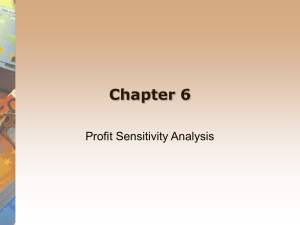
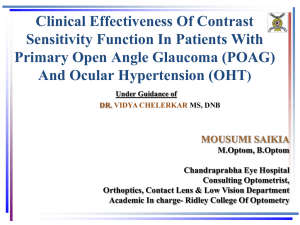
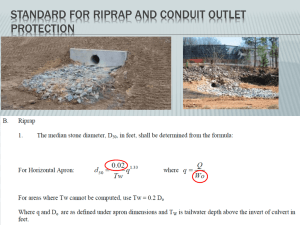


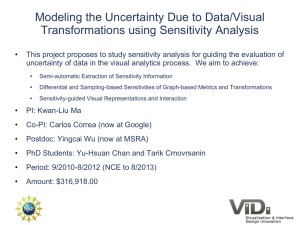
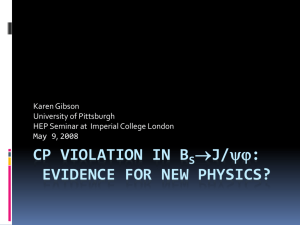
![Measurement of CP asymmetry in B[0 over s] D[... s]K[superscript ±] decays Please share](http://s2.studylib.net/store/data/011965124_1-8a17e43ddd6c830315813675a2bc3e2f-300x300.png)